The numbers in the figure are the same as the last time.
Using Vertical Columns
By the way, the name "vertical sequence" is a matrix suitable for analyzing cascade connections, as I explained in the previous explanation of Fig. 1.
I touched on it briefly in the column below.
Line where Z0 changes midway due to wiring from BGA etc.
It can be used not only for analysis when different lines are cascaded, but also for various other situations. Here are some of them.
capacitive reflection
Cascade connections can be used not only for cascading lines and lines, but also for connecting circuit elements.
When lines and circuit elements are connected
For circuit elements, the basic form is used where impedance Z is connected between input and output, and admittance Y is connected between terminals and ground.
See Figure 2 in the column below.
vertical row
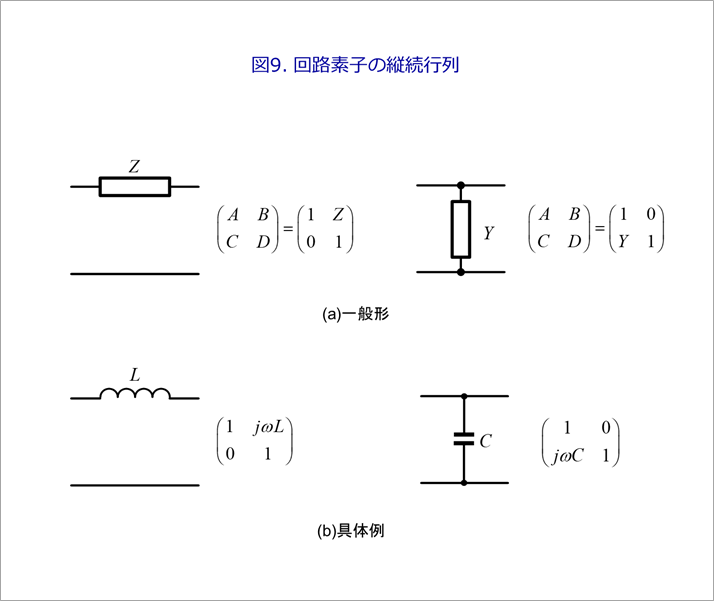
As shown in Figure 9(a), it shows a cascade with an impedance Z between the input and output and an admittance Y between the terminals and ground.
As shown in the diagram (b), the impedance between the input and output is often the inductance L, and the admittance between the terminals and the ground is often the capacitance C.
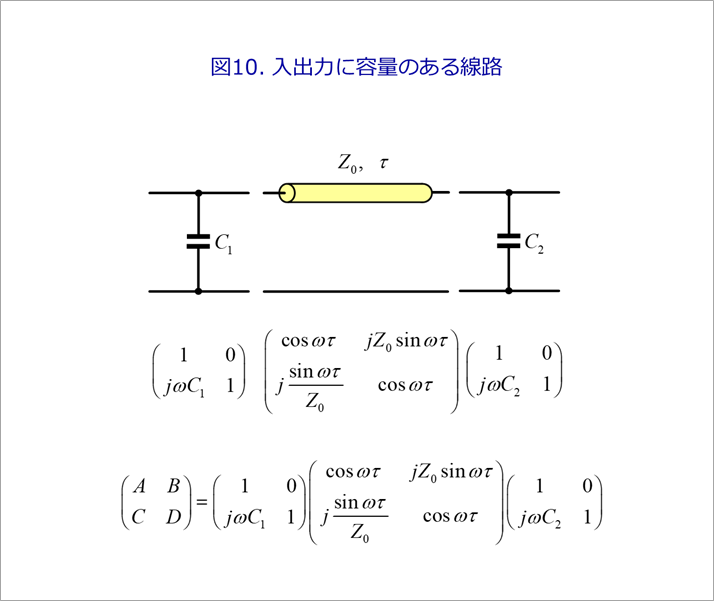
Capacitors C1 and C2 are connected to the near and far ends, respectively, as shown in Figure 10. Consider an example in which a capacitor C is connected between the terminals of the capacitance shown in Figure 9(b) and between the ground. The equation in Figure 10 is a cascade of lines connecting input capacitance C1 and output capacitance C2. The multiplication of three vertical columns can be obtained much more easily by using spreadsheet software than by transforming the formula.
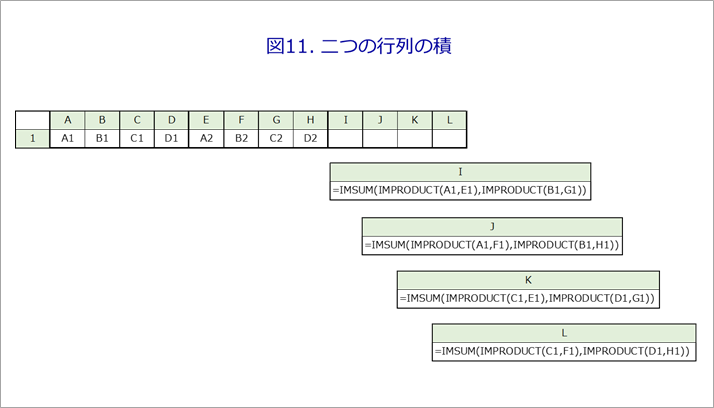
Figure 11 shows the matrix multiplication operation in Excel.
Give the first matrix (A1, B1, C1, D1) to Excel cells A1-D1 and the second matrix A2-D2 to (E1, F1, G1, H1). Find the product of the two matrices in I1, J1, K1, L1. The calculation formula is shown in the figure. Since it is a complex number operation, the sum is obtained by IMSUM and the product by IMPRODUCT.
If we copy the operation of multiplying two matrices with the product of two matrices as the first matrix and a new matrix as the second matrix, we get the product of three matrices. You can repeat this to find the product of any number of matrices.
Solving equation (10) in Figure 3 for the resulting cascade gives the far-end voltage V2. Inverse fast Fourier transform of this gives the time response.
It's not interesting just to expand the formula, so let's do the actual calculation. The formulas to be used are the same as the previous formula (2) and formula (10).
The voltage at the far end of the distributed constant circuit is given by equation (10), and the vertical series A, B, C, and D are given by equation (2). As described in FFT by Excel (Part 2), the waveform calculation uses the FFT Excel created by the author.
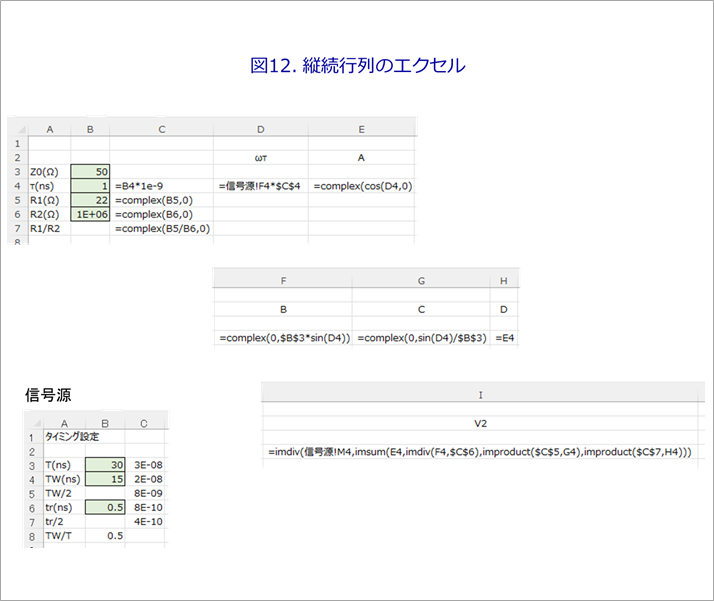
Using this Excel (FFT256.xlsx), for example, in Sheet1, calculate the voltage of the cascade and the far end as shown in Figure 12. Columns A and B in Figure 12 are the circuit conditions, and C4 converts the line delay time τ (ns) into seconds. C5 through C7 are complex representations of B5 through B7. D4 is the product of ω from the source sheet of FFT256.xlsx and τ from C4. E4 to H4 are vertical columns. I4 is the previous equation (10). The signal source uses the trapezoidal wave from the FFT256.xlsx signal source sheet.
Copy the 4 lines in Figure 12 up to 132 lines. Enter I4 as an absolute reference in A2 of the FFT256.xlsx waveform sheet. For Sheet1, enter "Sheet1!$I$4" in A2.
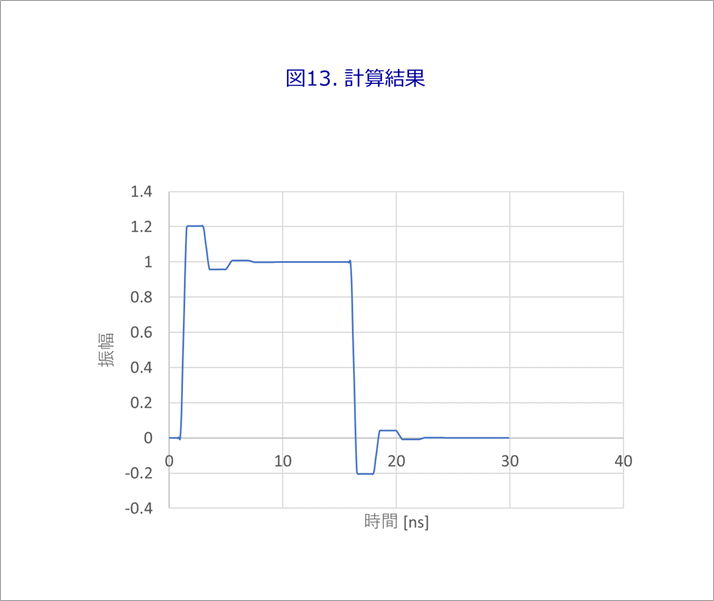
Figure 13 is the calculation result of FFT256.xlsx.
Enter arbitrary values in the green cells (B3 to B6) in Fig. 12 for the line and far-end/near-end conditions. For the signal source conditions, enter arbitrary values in the green cells (B3, B4, B6) of the signal source sheet of FFT256.xlsx.
If there is capacity in the input and output, use the vertical sequence obtained by repeatedly using the matrix product in Figure 11 for the vertical sequence in Figure 10.
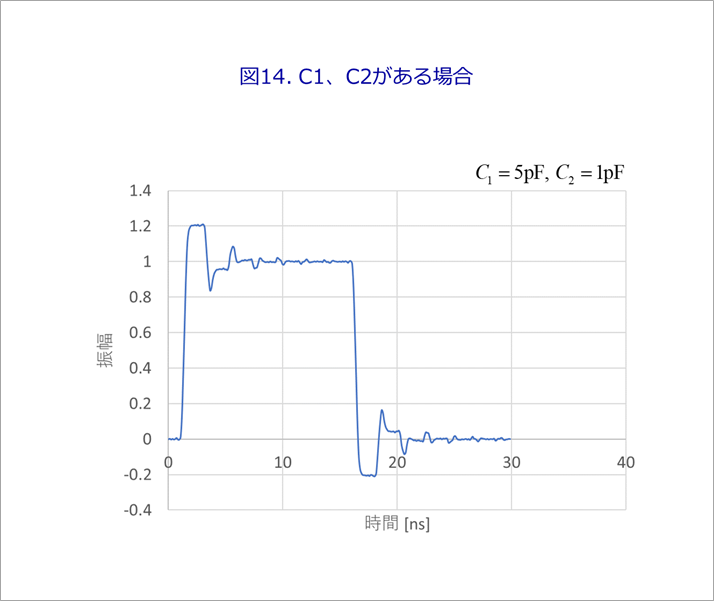
Figure 14 shows the analyzed far-end waveform when there is capacitance on the input and output as in Figure 10. To exaggerate the effect of capacitance, C1=5pF and C2=1pF.
It's a little playful about cascade connection, but let's analyze the equivalent circuit of the LC of the distributed constant circuit by repeating the cascade connection. This can be easily analyzed using the previous formula (2). Of course, using SPICE is also easy. I dare to solve it as "play" because I want you to be interested in vertical rows.
The equivalent circuit of the distributed constant circuit is
Distributed constant circuit - what is distributed?
As shown in Figure 1 of , L and C are distributed.
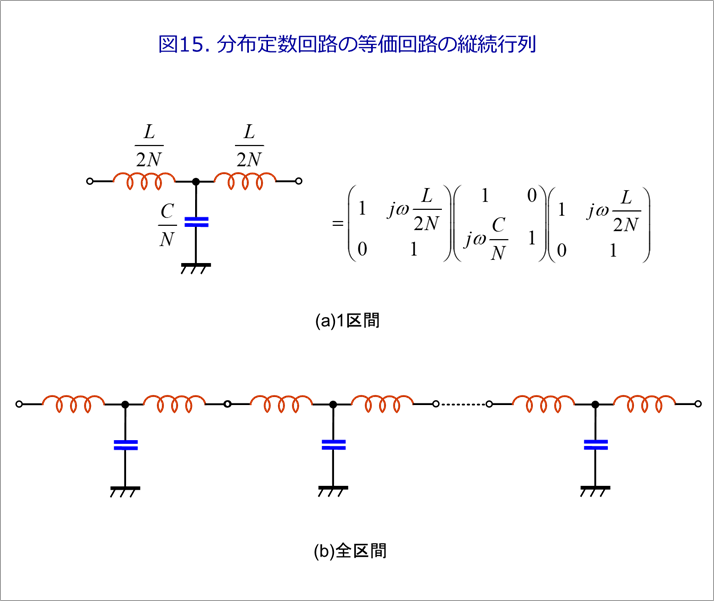
Figure 15 shows how this is written in a vertical column. Figure 1(a) shows one section and its vertical sequence when the whole is divided into N sections. (b) of the same figure is a connection of all the sections. The product of the three matrices in (a) is treated as one interval, and its square is repeatedly calculated.
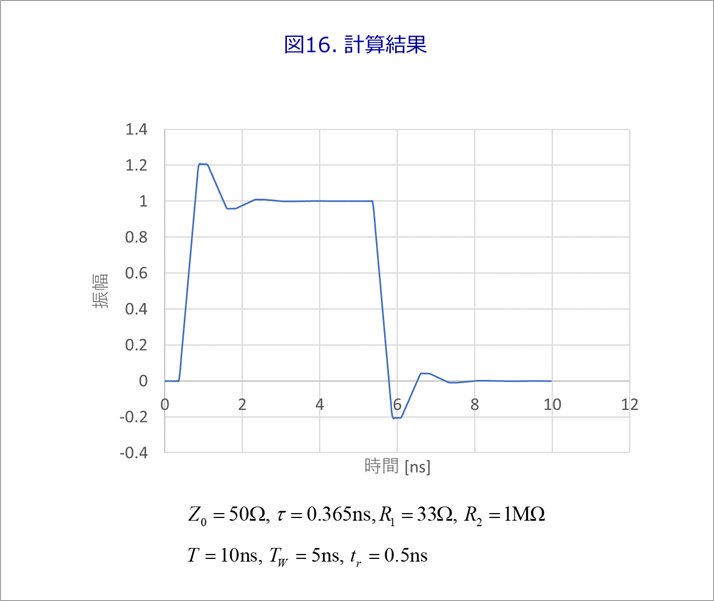
Figure 16 is the reflection waveform for N=64. I used FFT256.xlsx as in Figure 12.
In this example, the reflected wave as shown in Fig. 16 was obtained with N=64. If you zoom in on the waveform, you can see small oscillations. Increasing N is a repeated operation of squaring one section, so it can be easily done by copying.
References
Yuzo Usui: All About Distributed Constant Circuits for Board Designers (3rd Edition) Self-published, pp.146-169, 2016
What is Yuzo Usui's Specialist Column?
It is a series of columns that start from the basics, include themes that you can't hear anymore, themes for beginners, and also a slightly advanced level, all will be described in as easy-to-understand terms as possible.
Maybe there are other themes that interest you!
